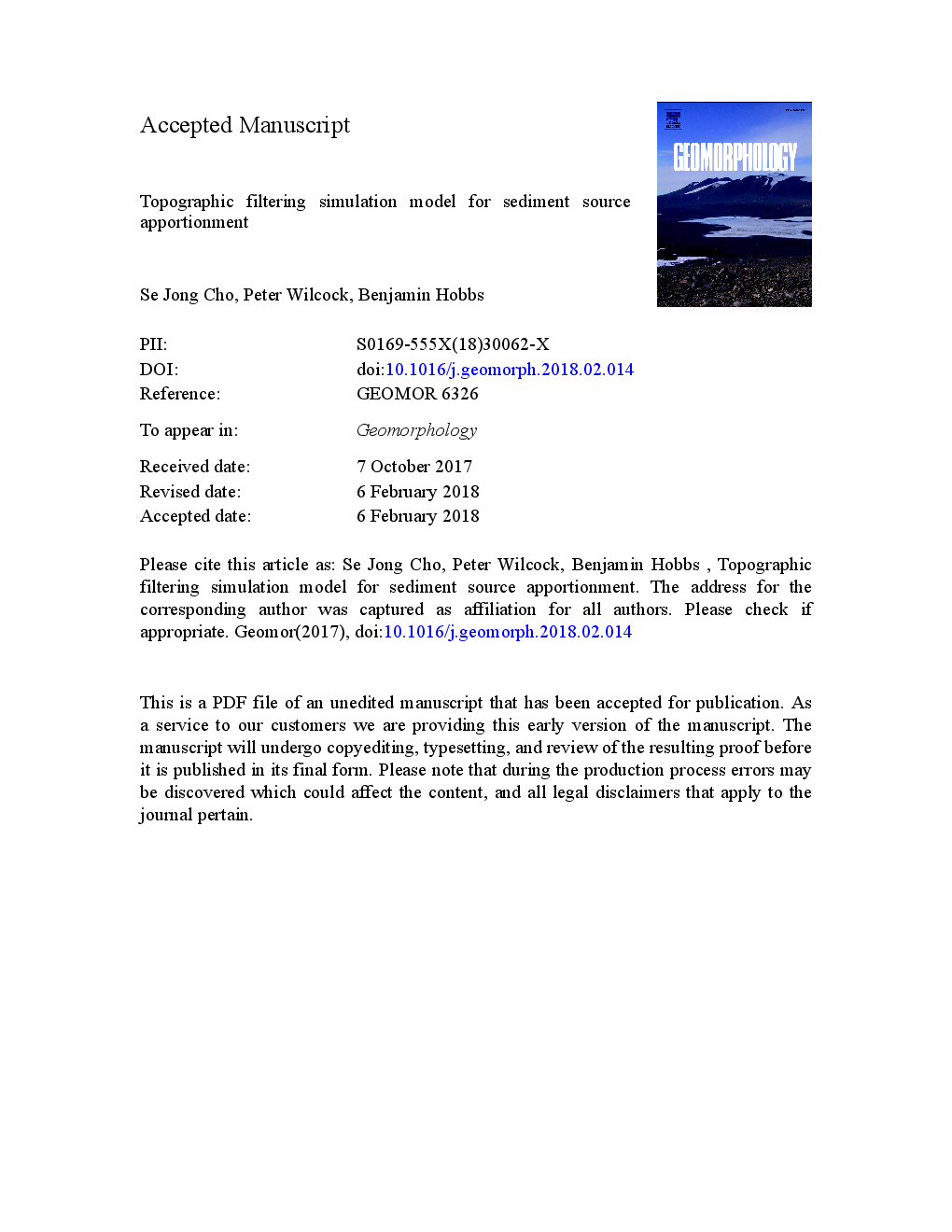ترجمه فارسی عنوان مقاله
مدل شبیه سازی فیلترینگ توپوگرافی برای تقسیم منبع رسوب
عنوان انگلیسی
Topographic filtering simulation model for sediment source apportionment
| کد مقاله | سال انتشار | تعداد صفحات مقاله انگلیسی |
|---|---|---|
| 95685 | 2018 | 51 صفحه PDF |
منبع

Publisher : Elsevier - Science Direct (الزویر - ساینس دایرکت)
Journal : Geomorphology, Volume 309, 15 May 2018, Pages 1-19
ترجمه کلمات کلیدی
نسبت رسوب رسوب، مونت کارلو، همبستگی، برآورد عدم قطعیت احتمال کلی عمومی، مدل سازی شبیه سازی آبخیزداری، آلودگی رسوب منبع بدون نقطه،
کلمات کلیدی انگلیسی
Sediment delivery ratio; Monte Carlo; Equifinality; Generalized likelihood uncertainty estimates; Watershed simulation modelling; Nonpoint source sediment pollution;

